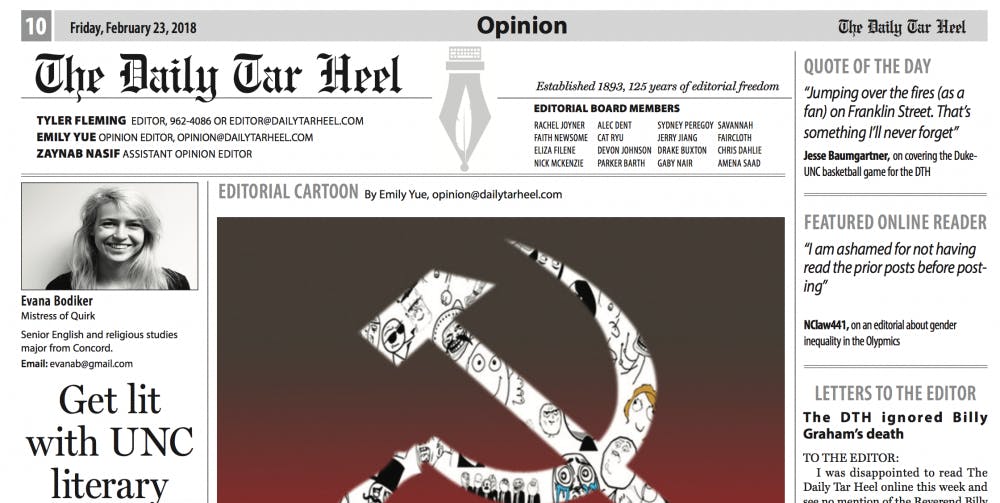For generations, editorial board members have pushed the boundaries, challenged ideas and ignited reactions within the university community.
“Controversy is good in a way; it means that you’re getting to the heart of something and making people think about stuff,” said Sam Schaefer, who served as opinion editor during the 2015-2016 school year. “The tradition the editorial page has makes it able to say more useful and challenging things than most other newspapers.”
In the 1940s, numerous editorials were penned to discuss the U.S.’s overseas involvement in the World War. In 1948, outspoken communist Bill Robertson wrote a column entitled “Christ was a Communist” and caused fury in the Jim Crow South, and then stoked the fire further by writing to abolish the Confederate flag at UNC sporting events. The Daily Tar Heel fired Robertson for the second column.
By the 1960s, opinion writers took debates to the press over the Civil Rights Movement, the Vietnam War and the tensions with the Soviet Union.
Schaefer said writers should look to expand current norms.
“There's been a long history of that kind of thing happening at the Daily Tar Heel, where it’s usually better if you just lean into the controversy," he said.
In 2005, The Daily Tar Heel made national headlines for running a cartoon allegedly depicting the face of the Islamic prophet Muhammad. Ryan Tuck, who served as editor-in-chief that year, said the original intention was not to show the face of Muhammad, but rather to speak to the political strife occurring after a Danish newspaper published a series of cartoons showing the prophet’s face.
“I thought it was exactly what a cartoon is supposed to do, which is to start a conversation in a way that an article can't do as powerfully,” Tuck said. “Really only cartoons and photos have that sort of visceral potency as far as being able to get to the crux of an issue that would take a thousand words if not more to do otherwise.”
In the days after the cartoon was published, Tuck said he received thousands of angry calls, emails and press coverage. A group of students staged a sit-in outside The Daily Tar Heel offices that lasted for several days, Tuck said. Eventually, Tuck met with the leaders of the Muslim Student Association on campus — holding a forum to discuss the cartoon controversy and depictions of Muslims generally.



